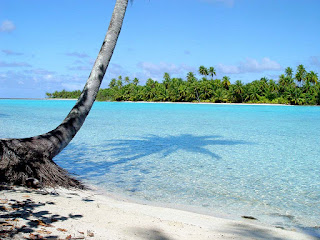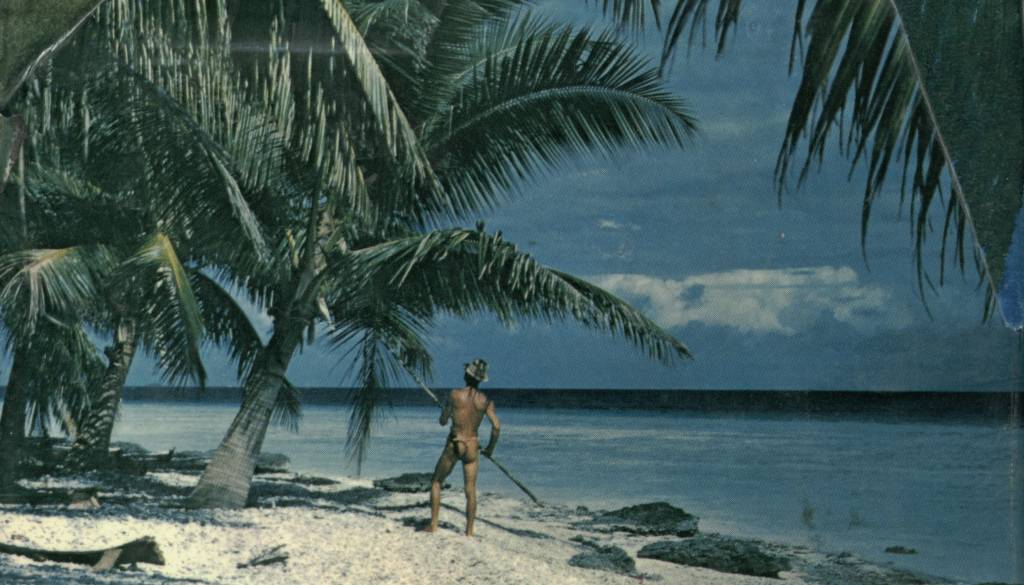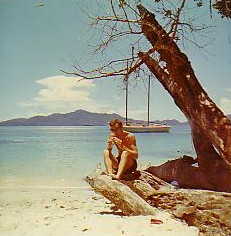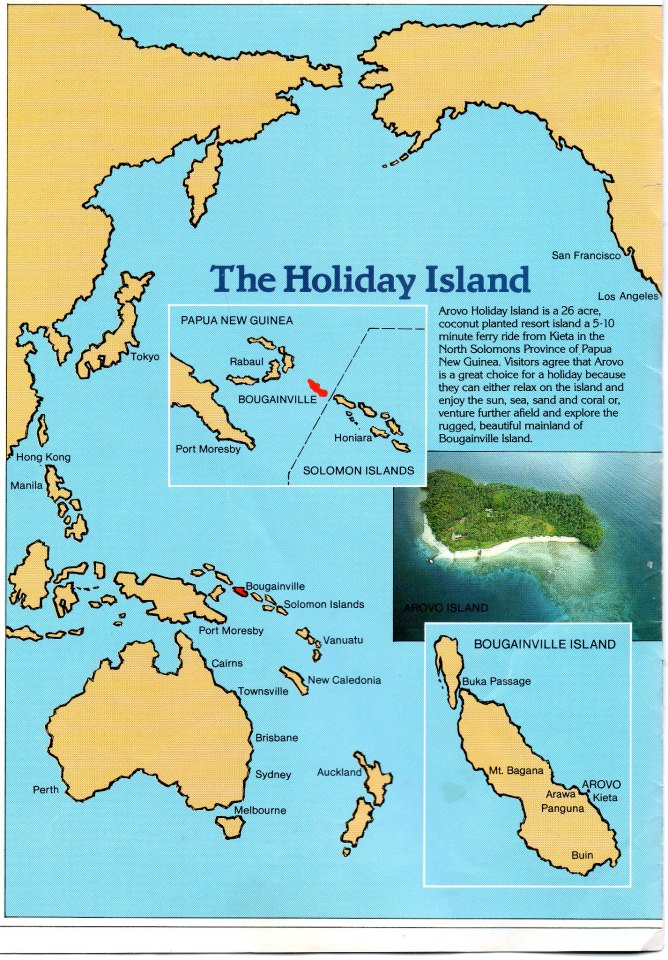Horst Berger's VILLA MAMANAAt last! An email - by courtesy of another island-dweller in Pangai on the neighbouring island of Lifuka - from my Austrian friend Horst Berger who many years ago made the Kingdom of Tonga his home. The photos show his new 'fale Tonga' native abode on remote Uiha Island. It has one solar panel to run one single lightbulb, his CD-player and a blender for the occasional 'banana-shakes, but no fridge and no phone. "What else do I need?", he muses.
It's right out of Boys Own! Beats living in suburbia, doesn't it?
Here is Horst's description of his 'Place in Paradise' (loosely translated by me):
"My 6 x 3.8m 'fale Tonga' is not waterproof but water-resistant and made entirely with local material using traditional methods: the floor is beach sand, the framework coconut palmtree trunks, walls and roof coconut palmtree fronds. The only concession to modernity is the use of 100 iron nails. The 'furniture' consists of a bed, a cupboard and two small tables, all made from old wooden boxes, and a small gas stove. Under the bed is a wooden box which contains my 'power station': a 12V-battery and a 500W inverter which feeds my 10W-12V Halogen light.
Outside, on the northside, is the all-important solar panel. Next to it is a small space to wash and dry my laundry and a few steps along my small workshop which contains tools and fishing gear. To the left is the toilet and outdoor shower. On the westside of the house, next to the entrance door, is my 'kitchen' as I normally cook outside (the gas stove is for rainy days or when it is too windy or to bake bread with)."
However, even Horst has to admit that "natürlich sehe ich auch Nachteile in einem 'natürlichen Haus' zu wohnen aber auch damit kann man leben." (of course, there are disadvantages to living in a 'strawhut' I can put up with it).
There, but for good wine, Camembert, Pavarotti, private health insurance, and a few other million things, go I.
As one old Tonga hand emailed after seeing the pictures: "Thank you for putting the photos of Horst's 'Villa Mamana' on the Internet. I love that solar cell panel on its stand. He seems to have his private beach too. It looks like he has finally fully settled into the Tongan environment. I would say he will end his days there. Not a bad choice for someone who has been hurt in our type of environment. Funny if one considers that the Tongans nowadays keep their pigs in that sort of houses. Even on Uiha most people now live in wooden or even stone houses. I wonder if they respect him for his way of life which for the Tongans is a thing of the past. After I got married I lived in very similar fashion in Ha'apai, but only for holidays. I am not sure if I would like to give up my house and join him there. It gets uncomfortable when you get old."
If you want to write to Horst, here's his mailing address:

When I write to him, I always enclose a small (and sometimes not so small) banknote to help him with the return postage and let him share a beer with me ☺
More on Horst here and here and here.














